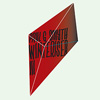 Recorded live last year in Dublin, the performance captured here on Paul G. Smyth’s latest album sees him pare back his piano improvisations to a crystalline and cool minimum. Limiting his runs across the keys has resulted in a rich but focussed exploration of the tonal capabilities of the piano (which despite its abundance in recorded music never fails to be a constant source of creative inspiration). Smyth is always a pleasure to listen to and this disc is no exception, I am kicking myself for not having made it to the concert in the first place.
Recorded live last year in Dublin, the performance captured here on Paul G. Smyth’s latest album sees him pare back his piano improvisations to a crystalline and cool minimum. Limiting his runs across the keys has resulted in a rich but focussed exploration of the tonal capabilities of the piano (which despite its abundance in recorded music never fails to be a constant source of creative inspiration). Smyth is always a pleasure to listen to and this disc is no exception, I am kicking myself for not having made it to the concert in the first place.
Hotter than July. This week's episode has plenty of fresh new music by Marie Davidson, Kim Gordon, Mabe Fratti, Guided By Voices, Holy Tongue meets Shackleton, Softcult, Terence Fixmer, Alan Licht, pigbaby, and Eiko Ishibashi, plus some vault goodies from Bombay S Jayashri and Pete Namlook & Richie Hawtin. Solstice moon in West Midlands, UK photo by James. Get involved: subscribe, review, rate, share with your friends, send images! |


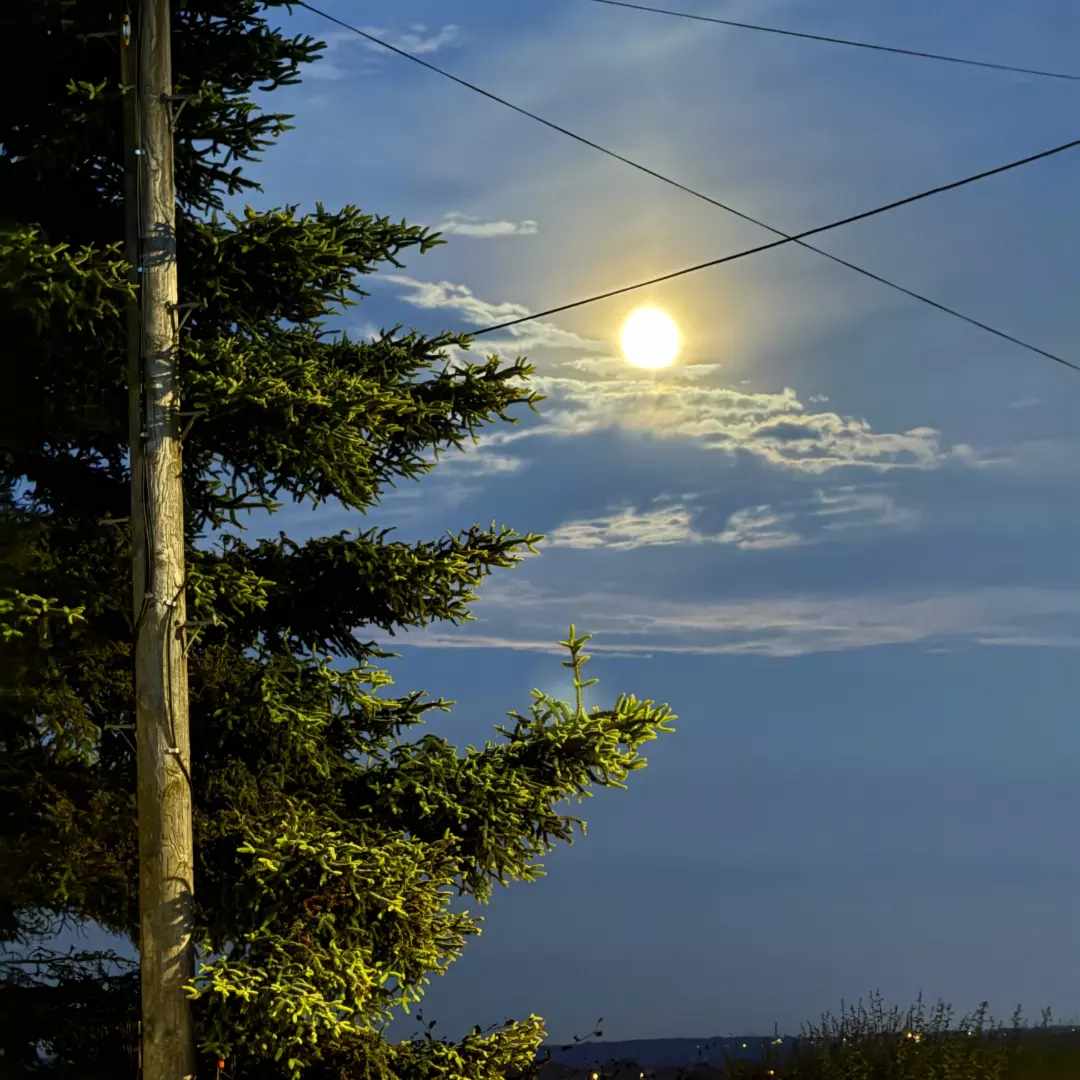
 I couldn’t help but feel a twinge of glorious nostalgia when I heard of this project. Justin Broadrick on guitar, Bill Laswell on bass, and Dr. Israel on vocals immediately brought me back to circa 1996-1998, where nearly every non-noise album I picked up had Laswell involved in some way, and I was pretty heavy into the Wordsound catalog at the time. Also, once I realized there was a distinct drum ‘n bass presence here via Submerged and Enduser, I was hoping for something great, but fearing something too rooted in the past. Luckily, my opinion is the former.
I couldn’t help but feel a twinge of glorious nostalgia when I heard of this project. Justin Broadrick on guitar, Bill Laswell on bass, and Dr. Israel on vocals immediately brought me back to circa 1996-1998, where nearly every non-noise album I picked up had Laswell involved in some way, and I was pretty heavy into the Wordsound catalog at the time. Also, once I realized there was a distinct drum ‘n bass presence here via Submerged and Enduser, I was hoping for something great, but fearing something too rooted in the past. Luckily, my opinion is the former. On their first release, this international trio (hailing from the US, UK and Switzerland) approach the world of electronic improvisation from an organic and synthetic perspective, with home made electronic instruments played live and then resampled in real time, where one artists output becomes another’s raw material. The trio of Django Voris, Moritz Wettstein, and PJ Normal do approach the world of krautrock with a different strategy than most, and the results are both dizzying and compelling.
On their first release, this international trio (hailing from the US, UK and Switzerland) approach the world of electronic improvisation from an organic and synthetic perspective, with home made electronic instruments played live and then resampled in real time, where one artists output becomes another’s raw material. The trio of Django Voris, Moritz Wettstein, and PJ Normal do approach the world of krautrock with a different strategy than most, and the results are both dizzying and compelling.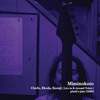 As some part of the Acid Mothers Temple nexus of forward thinking rock musicians in Japan, Junzo Suzuki’s Miminokoto keeps the psychedelic freakout tendencies in check, but the trio isn’t afraid to push their folksy sound into rawer, less conventional territory. Compared to his recent Pieces for Hidden Circles, the full band setting helps to create a more diverse and rich tapestry of sound that bears his mark.
As some part of the Acid Mothers Temple nexus of forward thinking rock musicians in Japan, Junzo Suzuki’s Miminokoto keeps the psychedelic freakout tendencies in check, but the trio isn’t afraid to push their folksy sound into rawer, less conventional territory. Compared to his recent Pieces for Hidden Circles, the full band setting helps to create a more diverse and rich tapestry of sound that bears his mark.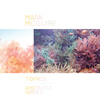 Emeralds' guitarist Mark McGuire tends to record and release new works at a somewhat superhuman and overwhelming pace, most of which are extremely limited and scattered over a number of different labels (making life pretty damn hard for the casual Emeralds fan). Thankfully, however, Weird Forest have stepped in and reissued two of Mark's better hopelessly unavailable tapes, now remastered by the ubiquitous James Plotkin.
Emeralds' guitarist Mark McGuire tends to record and release new works at a somewhat superhuman and overwhelming pace, most of which are extremely limited and scattered over a number of different labels (making life pretty damn hard for the casual Emeralds fan). Thankfully, however, Weird Forest have stepped in and reissued two of Mark's better hopelessly unavailable tapes, now remastered by the ubiquitous James Plotkin.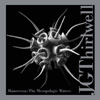 Nearly a decade ago, Jim Thirlwell released a pair of instrumental albums under the then-new guise of Manorexia on his own Ectopic Ents label. While he hasn’t released anything new from the project since, he has been steadily shaping the Manorexia sound into something rather far removed from its origins through a series of sporadic performances arranged for chamber ensemble. The Mesopelagic Waters is the end result of those efforts, re-envisioning a selection of those embryonic tracks as a harrowing and skillfully rendered modern classical suite.
Nearly a decade ago, Jim Thirlwell released a pair of instrumental albums under the then-new guise of Manorexia on his own Ectopic Ents label. While he hasn’t released anything new from the project since, he has been steadily shaping the Manorexia sound into something rather far removed from its origins through a series of sporadic performances arranged for chamber ensemble. The Mesopelagic Waters is the end result of those efforts, re-envisioning a selection of those embryonic tracks as a harrowing and skillfully rendered modern classical suite. Rhythm is often a matter of togetherness. It binds songs like mortar, measures melody and harmony, marks the entrances and exits of instruments, and draws distant ideas into close proximity, if not for the sake of a single voice, then for the sake of single performance or a unified work. Though they are a quartet of two contrabasses, percussion, and guitar, Sult rejects that mode of timekeeping on Svimmelhed. Repeated patterns and measured distances are supplanted by an anatomical focus, on the particulars of steel and nylon strings, plastic drum heads, and wooden bodies. Sult break the gluey qualities of their instruments into atomic elements, then separate and catalog them like isotopes or tints and shades of a mother color.
Rhythm is often a matter of togetherness. It binds songs like mortar, measures melody and harmony, marks the entrances and exits of instruments, and draws distant ideas into close proximity, if not for the sake of a single voice, then for the sake of single performance or a unified work. Though they are a quartet of two contrabasses, percussion, and guitar, Sult rejects that mode of timekeeping on Svimmelhed. Repeated patterns and measured distances are supplanted by an anatomical focus, on the particulars of steel and nylon strings, plastic drum heads, and wooden bodies. Sult break the gluey qualities of their instruments into atomic elements, then separate and catalog them like isotopes or tints and shades of a mother color.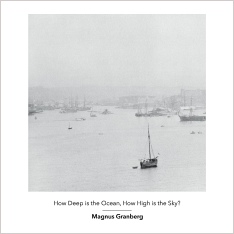 Magnus Granberg’s fourth composition for Another Timbre—and second album under his own name—borrows its title and some of its musical material from
Magnus Granberg’s fourth composition for Another Timbre—and second album under his own name—borrows its title and some of its musical material from  Winged Victory's second full-length album is an hour-long score composed for a dance piece by the Royal Ballet's resident choreographer Wayne McGregor, but the line separating such an endeavor from AWVFTS's traditional activities is thin at best.  First glimpsed earlier this year with the slightly more experimental Atomos VII EP, Atomos offers exactly the sort of the slow-moving, neo-classical melancholia that I have grown to expect from Adam Wiltzie and Dustin O’Halloran, but with some subtle, yet significant, evolution in both their compositional approach and their instrumental palette.
Winged Victory's second full-length album is an hour-long score composed for a dance piece by the Royal Ballet's resident choreographer Wayne McGregor, but the line separating such an endeavor from AWVFTS's traditional activities is thin at best.  First glimpsed earlier this year with the slightly more experimental Atomos VII EP, Atomos offers exactly the sort of the slow-moving, neo-classical melancholia that I have grown to expect from Adam Wiltzie and Dustin O’Halloran, but with some subtle, yet significant, evolution in both their compositional approach and their instrumental palette. Way back in 2006, Chris Herbert released the excellent Mezzotint on Kranky, an album that established him as one of the most compelling drone artists around at the time.  Since that hugely promising beginning, however, he has remained largely dormant, surfacing only rarely and struggling to find the time to work on new material.  Thankfully he eventually found it, but this pair of releases did not come easily, as they are both culled from material dating back to 2007.  Despite that period of inactivity and the patient composition process, however, Herbert is remarkably still at the top of his game.  Aside from some parts of the Wintex EP, these new pieces perhaps lack some of Herbert’s earlier melodic immediacy (listen to Mezzotint’s "Let’s Get Boring!"), but he more than compensates for that through hypnotic depth and rich texture.  In fact, I think at least one of these releases may very well be a masterpiece.
Way back in 2006, Chris Herbert released the excellent Mezzotint on Kranky, an album that established him as one of the most compelling drone artists around at the time.  Since that hugely promising beginning, however, he has remained largely dormant, surfacing only rarely and struggling to find the time to work on new material.  Thankfully he eventually found it, but this pair of releases did not come easily, as they are both culled from material dating back to 2007.  Despite that period of inactivity and the patient composition process, however, Herbert is remarkably still at the top of his game.  Aside from some parts of the Wintex EP, these new pieces perhaps lack some of Herbert’s earlier melodic immediacy (listen to Mezzotint’s "Let’s Get Boring!"), but he more than compensates for that through hypnotic depth and rich texture.  In fact, I think at least one of these releases may very well be a masterpiece.
